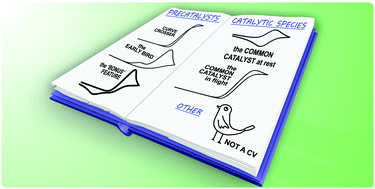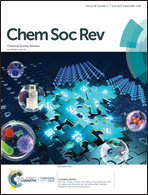On decomposition, degradation, and voltammetric deviation: the electrochemist's field guide to identifying precatalyst transformation
Abstract
What is the identity of the true electrocatalytic species? This fundamental question has plagued the molecular electrocatalysis community during its decades-long search for selective and efficient transition-metal based electrocatalysts for fuel forming reactions. Identifying when the added species is a precatalyst that transforms into the active catalyst in situ is an extraordinarily complex endeavor. Thankfully, the last decade has witnessed a resurgence of interest in understanding and controlling these transformations, leading to an expansion of the experimental toolkit available to probe catalyst identity. In this Tutorial Review, researchers will learn how the nature of the active catalyst can be uncovered using state-of-the-art electrochemical and spectroscopic methods. Analysis of catalytic voltammograms can quickly furnish qualitative evidence of precatalyst transformation and a library of these tell-tale signs is discussed, along with the chemical phenomena underpinning each feature. Complementary electrochemical and spectroscopic methods for identifying in situ generation of heterogeneous catalysts are also presented, outlining the conditions required for correct application with special emphasis on potential pitfalls when studying weakly-adsorbed material. Case studies are presented to showcase how these different probes can be integrated to develop a comprehensive picture of precatalyst transformation.



 Please wait while we load your content...
Please wait while we load your content...
